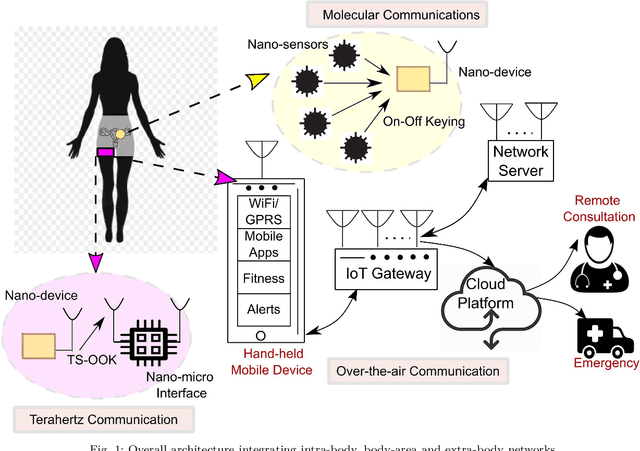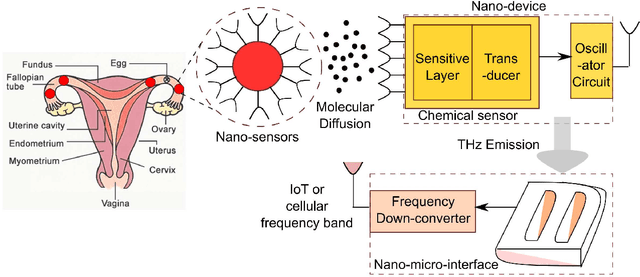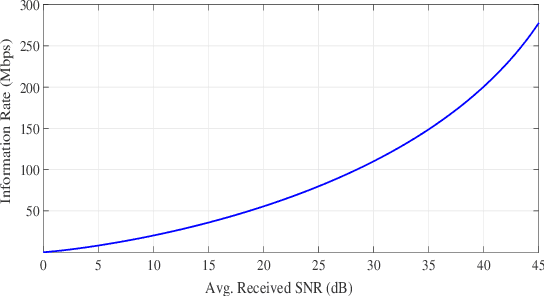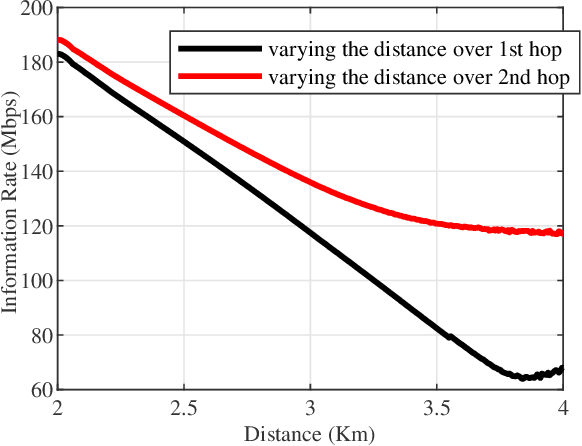A Nano-Architecture for Fertility Monitoring via Intra-body Communication
Paper and Code
Feb 04, 2022



Fertility monitoring in humans for either natural conception or artificial insemination and fertilization has been a critical challenge both for the treating physician and the treated patients. Eggs in human female can be fertilized when they reach the Fallopian tube from the upper parts of the reproductive system. However, no technology, till date, on its own could detect the presence of eggs in the Fallopian tube and communicate their presence to the consulting physician or nurse and the patient, so that the next step can be initiated in a timely fashion. In this paper, we propose a conceptual architecture from a communications engineering point of view. The architecture combines intra-body nano-sensor network for detecting Fallopian tube activity, with body-area network for receiving information from the intra-body network and communicating the same over-the-air to the involved personnel (physician/nurse/patient). Preliminary simulations have been conducted using particle based stochastic simulator to investigate the relationship between achievable information rates, signal to noise ratio (SNR) and distance. It has been found that data rate as high as 300 Mbps is achievable at SNR 45. Hence, the proposed architecture ensures transfer of information with near-zero latency and minimum energy along with high throughput, so that necessary action can be taken within the short time-window of the Fallopian tube activity.
 Add to Chrome
Add to Chrome Add to Firefox
Add to Firefox Add to Edge
Add to Edge